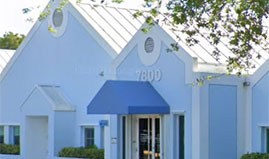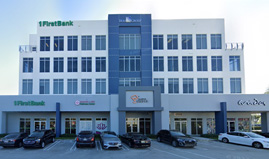Shoulder Arthroscopy
Introduction
The information provided in this website is aimed to provide a general overview of shoulder arthroscopy. By no means does this document offer a full comprehensive review of all shoulder problems or treatment options. Be sure to discuss your questions with your surgeon. There are significant variations of shoulder arthroscopy techniques from surgeon to surgeon.
Overview
Arthroscopy is an orthopedic surgical procedure whereby the surgeon can evaluate and treat the shoulder joint. Arthroscopy is performed with the use of a camera and minimally invasive instruments. The first documented arthroscopy dates back over a century ago during the 1910’s when it was used as a diagnostic tool to evaluate the joint. Several years later, with advancements in the camera, optics, and techniques, arthroscopy become useful in the treatment of joint pathology such as meniscus tears in the knee joint. Currently, arthroscopy is a mainstay procedure for shoulder, elbow, wrist, hip, knee, ankle and foot disorders. The shoulder is an ideal joint for arthroscopy, especially in the treatment of rotator cuff tears, instability, labrum tears, SLAP lesions, cartilage lesions, and impingement.
Shoulder Arthroscopy Video Animation
What are the Benefits of Arthroscopic Surgery?
There are several benefits of arthroscopic surgery. The potential benefits over open shoulder surgery are: 1) less surgical injury - the arthroscope is inserted through small 1-2 cm incisions, or portals, that split the muscle fibers. When the camera is removed, the muscle fibers return to their normal position and alignment. This therefore minimizes contact with normal structures. This also results in 2) less surgical pain and potentially 3) faster recovery time. The cameras also provide 4) better visualization of the injured structures and therefore the surgeon is able to 5) perform a more anatomically correct repair. Another benefit of arthroscopy is that the procedure can be performed as an 6) outpatient procedure and the patients can often go home within a few hours after the procedure. All of these lead to improved overall outcomes and patient satisfaction.
Arthroscopy has advanced the treatment of several shoulder conditions. The following are common arthroscopic procedures performed by Dr. Hommen:
A rotator cuff tear is a common cause of shoulder pain and disability among adults. Normally there are 4 rotator cuff tendons that form a covering over the top of the shoulder. These tendons allow the shoulder to move and rotate.
Information on rotator cuff tear from the American Academy of Orthopedic Surgeons
In the event of a massive rotator cuff tear that is not repairable, your surgeon may decide to place a graft of either allograft (cadaver) or autograft (your own) tissue.
Augmentation: The graft may be sutured on top of the repaired tendon to augment the repair and provide additional strength.
The labrum is a lip-like piece of cartilage that deepens the socket (glenoid) of the shoulder joint. It functions to help stabilize the shoulder. The labrum is divided into superior, inferior, anterior and posterior segments. The anterior-inferior portion of the labrum can be torn when the shoulder dislocates in a forward direction.
SLAP lesion and Labrum repair Brochure
Information on SLAP lesion from the American Academy of Orthopedic Surgeons
The labrum is a lip-like piece of cartilage that deepens the socket (glenoid) of the shoulder joint. It functions to help stabilize the shoulder. The labrum is divided into superior, inferior, anterior and posterior segments. The anterior-inferior portion of the labrum can be torn when the shoulder dislocates in a forward direction.
SLAP lesion and Labrum repair Brochure
Information on Shoulder Labrum Tears from the American Academy of Orthopedic Surgeons.
A dissociation of the humeral head and socket (glenoid). The shoulder may partially subluxate or completely dislocate. Complete dislocations may require emergent reduction of the shoulder. Dislocations may lead to a tear of the shoulder capsular ligaments and a separation of the glenoid labrum. They may also result in cartilage injuries to the humeral head and/or glenoid.
Information on Shoulder Instability from the American Academy of Orthopedic Surgeons.
A shoulder separation is not truly an injury to the shoulder joint. The injury actually involves the acromioclavicular joint (also called the AC joint). The AC joint is where the collarbone (clavicle) meets the highest point of the shoulder blade (acromion).
The surgeon performs a diagnostic examination of the shoulder. A thorough 15-point examination of all structures in the shoulder is performed via the camera. Structures included in the examination are: biceps tendon, labrum, capsular ligaments, inferior recess, humerus posterior bare area, rotator cuff tendon insertion of teres minor/infraspinatus/supraspinatus/subscapularis, humerus cartilage, glenoid cartilage, subacromial space, and the acromioclavicular joint.
There are several medical device options available in shoulder repair surgery.
- Sutures:
- To perform capsulorrhaphy to imbricate the shoulder capsule to prevent dislocation in shoulder instability.
- To perform side-to-side rotator cuff tendon repairs.
- To repair tendons and ligaments back to bone with suture deployed as anchors in bone or through bone tunnels.
- Suture anchors:
- To repair ligaments or tendons back to it’s bony attachments site.
- Anchors are placed into the bone first. Then the sutures are placed through the tendon or ligament to be repaired.
- Is this a pain I can live with, or am I going to harm myself further if I don't get it fixed?
- Is the procedure necessary, or is it advisable?
- Are there other alternatives to surgery?
- How much will it improve me - a little or a lot? Ask for a percentage.
- Can it wait, what will happen if I do wait?
- What is the recovery time?
- How long will I be off work? How long will I be off sports and leisure activities?
- How much physical therapy will I need afterwards?
- Are there regional variations in techniques?
- How often is this procedure done?
- Why should I choose this surgeon?
- How many procedures does he/she do per year?
- What is his/her results? Does he/she know, and how?
- What are the potential complications? How common are they?













